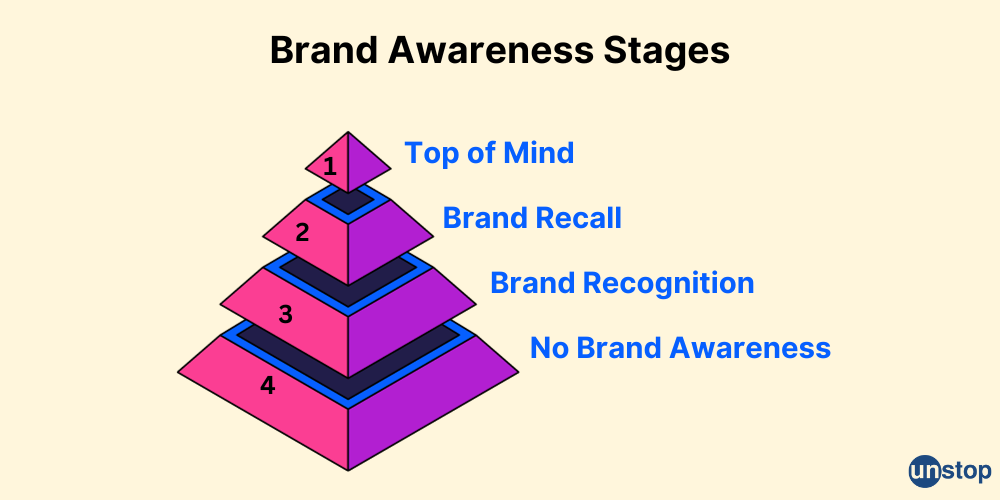- What is a Brand & Why is it Important?
- Elements of a Brand: Mission, Vision, and Values
- Types of Brands and their Significance
- Branding Strategies: Private, Multiproduct, and Mixed
- Brand Image and Its Impact on Perception
- Building a Strong Brand
- Frequently Asked Questions
- Understanding Brand Equity: Definition and Elements
- Importance of Brand Equity
- Evolution Of Brand Equity In The Digital Age
- Brand Equity in the Global Marketplace
- Measuring Brand Equity: Metrics & Methods
- Managing Brand Equity: Salient Elements
- Building & Managing Brand Equity: Best Practices
- The Future of Brand Equity
- Conclusion
- Frequently Asked Questions
- What is Brand Management?
- Importance of Brand Management
- Benefits of Effective Brand Management
- Principles of Brand Management
- Strategies for Successful Brand Management
- Brand Management vs. Marketing
- Conclusion: The Power of Brand Management
- Frequently Asked Questions
- Importance of Brand Image in Marketing
- Key Elements of a Successful Brand Image
- Brand Image vs. Brand Identity: Key Differences
- Measuring and Monitoring Brand Image
- Strategies for Maintaining and Enhancing Brand Image
- The Power of a Positive Brand Image
- FAQs
- What is Brand Awareness and its Importance?
- Benefits of Brand Awareness
- Brand Awareness Strategy: Some Tried & Tested Methods
- Some Creative Ways to Boost Brand Awareness
- Significance of Brand Awareness
- Conclusion
- Frequently Asked Questions
- Porter's 5 Forces Model: What Is It?
- Porter's 5 Forces Model: How To Use It?
- Common Barriers to Entry
- Evaluating Suppliers' Negotiating Power
- Understanding the Bargaining Power of Buyers
- Analyzing Threat of Substitute Products or Services
- Rivalry amongst Competitors (Old & New)
- Drawbacks of the Five Forces Model
- Conclusion
- Frequently Asked Questions
- How Well Do You Know Porter’s 5 Forces? Take A Quiz!
- What is Buying Motive?
- Types Of Buying Motives
- Importance Of Buying Motives
- Six Universal Buying Motives
- Identifying Buyer's Motives
- Utilizing Buying Motives In Sales
- Challenges In Interpreting Buying Motives
- Frequently Asked Questions (FAQs)
- 💸 Think You Know Buying Motives? Take A Quiz!
- Understanding the Elements and Importance of Brand Equity
- What are brand equity models?
- Comparing Keller's and Aaker's brand equity models
- Real-world examples of brand equity in action
- Strategies for building strong brand equity
- Key takeaways on brand equity models
- FAQs
- Mastered Brand Equity Models? Prove It!
- What Is Brand Positioning?
- The Importance of Brand Positioning for Businesses
- Creating A Brand Positioning Strategy: Step-By-Step Process
- Measuring the Success of Your Brand's Positioning
- Examples of Strong Brand Positioning in the Market
- Types of Brand Positioning Strategies
- Social Media Engagement: A Key Positioning Strategy
- What Makes a Good Brand Positioning Strategy?
- Conclusion
- Frequently Asked Questions
- Quick Quiz to Test Your Knowledge of Brand Positioning!
- Brand Personality: Definition & Importance
- How to Define Your Brand Personality?
- Choosing Your Brand Personality Attributes
- Dimensions of Brand Personality Framework: The Aaker Model
- Incorporating Core Values Into Your Brand Personality
- Examples of Brand Personalities in Action
- Conclusion
- Frequently Asked Questions
- Brand Personality Quiz– Let's Go!
- What is Brand Identity?
- What are the Key Components of Brand Identity?
- Importance & Benefits Of Brand Identity
- Importance of Unique Visual Elements in Brand Identity
- Communication Style and Tone of Voice in Brand Identity
- Steps on How to Create a Brand Identity
- Brand Identity Example- Coca-Cola
- Examples of Strong Brand Identities in Different Industries
- Consistency in Online and Offline Branding
- Conclusion
- Frequently Asked Questions (FAQs)
- Think You Know Brand Identity? Take A Quiz!
- Brand Identity Prism: Understanding The Concept
- Role Of Culture In Brand Identity Prism
- Brand Identity Prism: Visualizing The Sender & Receiver
- Benefits Of Brand Identity Prism
- Examples Of Brand Identity Prism In Action
- Brand Identity Prism: Key Takeaways
- Frequently Asked Questions
- Take This Brand Identity Prism Quiz!
- What is Market Segmentation?
- Importance of Market Segmentation
- The Market Segmentation Process
- Types of Market Segmentation
- Common Challenges in Implementing Market Segmentation
- Overcoming Challenges in Market Segmentation
- Conclusion: Understanding The Impact
- Frequently Asked Questions (FAQs)
- Test Your Market Segmentation Knowledge– Take This Quiz!
- What is Brand Loyalty? Meaning & Significance
- Characteristics of Brand Loyalty
- Measuring and Tracking Brand Loyalty
- Importance of Brand Loyalty for Companies
- Brand Loyalty Examples and Types
- Strategies for Building Brand Loyalty
- Differentiating Brand Loyalty from Customer Loyalty
- Conclusion: The Power and Importance of Brand Loyalty
- Frequently Asked Questions
- Think You Know Brand Loyalty? Take A Quiz!
- Brand Extension Meaning
- Brand Extension Types
- Understanding Brand Line Extension vs. Brand Extension
- The Impact and Potential of Brand Extension
- Successful and Unsuccessful Brand Extensions Examples
- Summing Up
- Frequently Asked Questions
- Quiz– Test Your Brand Extension!
- Step-by-step guide on how to build a brand from scratch
- Benefits of a Strong Brand
- Examining Successful Brand-Building Examples
- Summing up
- Frequently Asked Questions
- Know How to Build a Brand? Prove it With This Quiz!
- What is Marketing Mix?
- Understanding the 4 Ps of Marketing
- The Seven Ps of Marketing
- Implementing the Marketing Mix in Business
- Amul: Example of Successful Marketing Mix Implementation
- Exploring Alternative Marketing Mix Models
- Conclusion
- Frequently Asked Questions (FAQs)
- Mastered the Marketing Mix! Test Your Knowledge Now
- Defining Brand Value and its Importance
- Measuring Brand Value
- Factors that Make a Brand Valuable to Customers
- Examples of Brand Value from Real World
- Brand Value Versus Brand Equity
- The Impact of Brand Value on Business Marketing Strategies
- Conclusion: The Significance of Brand Value
- Frequently Asked Questions
- How Much Do You Know About Brand Value? Take This Quiz!
- Definition Of Co-Branding
- Different Types Of Co-Branding
- Benefits & Advantages Of Co-Branding
- Strategies For Successful Co-Branding Partnerships
- Notable Successful Co-Branding Examples
- Factors Influencing Co-Branding Success
- Frequently Asked Questions (FAQs)
- Co-Branding Quiz: Test Your Expertise!
- What is a Target Market?
- Importance of Target Market: Why Do We Need It?
- Types of Target Market
- The Target Marketing Process
- Primary Research for Target Markets
- Leveraging Target Market Segmentation for Sales
- Conclusion
- Frequently Asked Questions (FAQs)
- 🎯 Do You Know Your Target Market? Take the Quiz!
- Importance of Understanding Consumer Decisions
- Traditional vs Contemporary Consumer Behaviour Model
- Traditional Models of Consumer Behaviour
- Learning Model of Consumer Behaviour
- Psychoanalytical Model of Consumer Behaviour
- Sociological Model of Consumer Behaviour
- Economic Model of Consumer Behaviour
- Contemporary Models of Consumer Behaviour
- EKB Model of Consumer Behaviour
- Black Box Model of Consumer Behaviour (Stimulus-Response Consumer Behaviour Model)
- Howard Sheth Model of Consumer Behaviour
- Hawkins-Stern Model of Consumer Behavior
- Webster and Wind Model
- Nicosia Model of Consumer Behaviour
- How to Select a Consumer Behaviour Model?
- Final Remarks
- Frequently Asked Questions
- 🛍️ Consumer Behavior Models Quiz: Test Your Knowledge!
- What is a Consumer?: Definition & Role
- The Evolution of the Term "Consumer"
- Consumer Behavior
- Different Types of Consumers
- Consumers' Motivation for Buying
- Relationship Between Businesses and Consumers
- Consumer Rights in India
- Current Challenges for Consumers
- The Future of Consumers in a Digital Age
- Final Remarks
- Frequently Asked Questions (FAQs)
- 🛍️ Consumer or Customer? Test Your Knowledge!
- What is a Market Structure?
- Types of Market Structures
- How Markets Work
- Significance of Different Types of Market
- Summing Up
- Frequently Asked Questions
- 🏪 Market Structures 101: Take the Quiz!
- Understanding the Concept of Corporate Branding
- Importance and Advantages of Corporate Branding
- Researching Competitor Brands
- Implementing Effective Corporate Branding Strategies
- Successful Corporate Branding Examples: Alphabet, Walmart & SAP
- Impact and Success of Corporate Branding
- Conclusion
- Frequently Asked Questions
- 🏢 Corporate Branding Quiz: Test Your Knowledge!
- Perception Management: Meaning & Importance
- Process Of Perception Management
- Influencing & Shaping Perceptions
- Strategies For Perception Management
- Technology In Perception Management
- Branding & Control In Perception Management
- Customer Feedback For Perception Improvement
- Frequently Asked Questions (FAQs)
- 🧠 Perception Management Quiz: How Well Do You Know It?
- Definition & Importance Of Target Marketing
- Advantages & Disadvantages Of Target Marketing Strategies
- Examples Of Target Marketing Strategies
- Creating An Effective Target Market Strategy
- Segmentation: Key To Targeted Marketing
- Utilizing Social Media For Targeted Marketing
- Frequently Asked Questions ( FAQs)
- 🎯 Target Marketing Strategies Quiz: Test Your Knowledge!
- Definition and Significance of Brand Association
- Brand Association Types
- Successful Brand Association Examples
- Strategies for Building Strong Brand Associations
- Overcoming Negative Brand Associations
- Conclusion: Harnessing the Power of Brand Association
- Frequently Asked Questions
- 🔗 Brand Association Quiz: Check Your Brand Knowledge!
- What is Product Positioning?
- Importance Of Product Positioning in Marketing
- Difference between Product Positioning and Brand Positioning
- Types Of Product Positioning
- Main Components Of Product Positioning
- Successful Product Positioning Strategies
- Understanding the Product Positioning Process
- Examples Of Effective Product Positioning
- Conclusion
- Frequently Asked Questions (FAQs)
- 🔥 Product Positioning Quiz: Test Your Marketing Smarts!
- How do we define niche market?
- Strategies To Find Your Niche Market
- 7 Examples Of Niche Markets
- Benefits Of Targeting A Niche Market
- Testing Your Product Or Service For Niche Market
- Conclusion
- Niche Market: Frequently Asked Questions (FAQs)
- 🎯 Niche Market Quiz: Test Your Knowledge!
- Importance Of STP In Marketing
- Understanding STP in Marketing Step-by-Step
- Process Of Implementing STP In Marketing
- Examples Of Successful STP Strategies
- Conducting An STP Marketing Analysis
- Choosing Your Marketing Mix
- Strategies For Targeting the Right Audience
- Conclusion
- Frequently Asked Questions (FAQs)
- 🔍 STP in Marketing Quiz: Test Your Knowledge!
- Sales and Marketing: Understanding the Core Concepts
- Key Differences Between Sales and Marketing
- Types of Marketing
- Types of Sales
- Power of Synergy: Sales and Marketing Alignment (Smarketing)
- Frequently Asked Questions (FAQs)
- Definition Of Customer Satisfaction
- Importance Of Customer Satisfaction
- Strategies For Effective Customer Satisfaction
- Measuring Customer Satisfaction
- Customer Satisfaction in Marketing & Sales
- Frequently Asked Questions (FAQs)
- 🎯 Customer Satisfaction Quiz: Are You an Expert?
- Customer Delight Meaning
- Benefits of Customer Delight
- Customer Satisfaction Vs Customer Delight
- Strategies With Customer Delight Examples
- How to Measuring the Impact Of Customer Delight?
- Customer Delight Examples - 3 instances by big brands that won hearts
- Common Mistakes In Customer Delight
- Conclusion
- Frequently Asked Questions (FAQs)
- 🌟 Customer Delight Quiz: Can You Ace It?
- What is a Marketing Plan?
- Types Of Marketing Plan
- What are the Key Components of a Marketing Plan?
- Steps for Effective Marketing Planning
- Crafting Your SEO Content Strategy
- Budgeting & Resource Allocation
- Identifying & Analyzing Competition
- Measuring Success with KPIs
- Importance of Flexibility in Marketing Planning
- Challenges of Marketing Plan
- Marketing Plan vs Business Plan
- Conclusion
- Frequently Asked Questions (FAQs)
- 📊 Marketing Planning Quiz: Test Your Knowledge!
- What is Marketing Control?
- Types of Marketing Control (with Examples)
- Annual Plan Marketing Control
- Profitability Marketing Control
- Efficiency Marketing Control
- Strategic Marketing Control
- Process of Marketing Control
- Techniques Used in Marketing Control
- Frequently Asked Questions
Brand Awareness: Meaning & Strategies With Real-World Examples

Brand awareness is a critical factor in shaping consumer perceptions and influencing purchasing decisions. It refers to the level of recognition and familiarity that consumers have with a particular brand. Establishing brand awareness requires consistent messaging and effective marketing strategies.
By building a strong brand image and identity, companies can increase customer loyalty and gain a larger market share. This article will delve into the importance of this concept, discuss brand awareness strategy for creating successful campaigns, and explore various brand awareness examples from the real-world.
What is Brand Awareness and its Importance?
Brand awareness plays a critical role in the success of any business. In simple words, brand awareness is all about how much the customers know your brand. When customers are aware of your brand, they are more likely to choose your products or services over others rather than lesser-known alternatives. This is called the familiarity bias. The increased demand can drive up sales figures and contribute to overall business growth.
Moreover, building strong brand recall and awareness lays the foundation for long-term relationships with customers. When people have positive experiences with your brand and develop an emotional connection to it, they become loyal advocates who continue to support your business over time.
Benefits of Brand Awareness
By creating strong brand awareness through effective advertising, companies can enjoy several benefits that contribute to their growth, profitability and overall brand personality. This includes increased consumer interest in their products and a reduced risk of product recall. The benefits of brand awareness are discussed below in detail.
Increased customer recognition, recall, and top-of-mind presence
When consumers are aware of your brand, they are more likely to select it when making purchasing decisions. This recognition leads to increased customer recall, meaning that your brand will come to mind when customers think about products or services related to your industry. With strong brand awareness, you can establish a top-of-mind presence among consumers, positioning yourself as a trusted and reliable option.

Positive associations and preference over competitors
Brand awareness fosters positive associations with your brand. When customers have positive perceptions of your company, they are more inclined to choose you over competitors. By consistently delivering on your promises and maintaining a strong presence in the market, you build trust and loyalty among consumers.
Premium pricing and increased profit margins
Higher brand awareness enables businesses to command premium pricing for their products or services through effective advertising. This can be achieved by creating a strong connection with the consumer, leading to increased recall of the brand. Customers are often willing to pay more for brands they trust and perceive as high-quality. This ability to charge higher prices can lead to increased profit margins for your business.
Opportunities for partnerships, collaborations, and expansion into new markets
Strong brand awareness opens doors for partnerships and collaborations with other businesses in complementary industries. By aligning with well-known brands or influencers, you can leverage their reputation and expand your reach even further. When your brand is widely recognized, it becomes easier to enter new markets and expand geographically.
Brand Awareness Strategy: Some Tried & Tested Methods
Below are some effective ways in which you can improve your brand awareness:
Utilize Social Media Platforms Effectively
Engage with your audience and amplify your brand message through the effective use of social media platforms. Create compelling content that resonates with your audience and encourage them to share it with their networks. Interact with followers, respond to comments, and foster a sense of community around your brand. Leverage features like hashtags, stories, and live videos to increase visibility and reach.
Implement Search Engine Optimization (SEO) Techniques
Improve online visibility and organic traffic by implementing SEO techniques. Conduct keyword research to identify relevant terms that align with your brand and incorporate them into your website content, meta tags, and headings. Optimize page load speed, ensure mobile responsiveness, and build high-quality backlinks from reputable websites. Regularly monitor analytics data to track improvements in search engine rankings.
Collaborate with Influencers or Industry Experts
Partnering with influencers or industry experts who align with your brand image and values can help you reach new audiences. Identify individuals who have a strong following within your target market and collaborate on campaigns or content creation. Their endorsement can lend credibility to your brand while exposing you to a wider audience.
Invest in Content Marketing Initiatives
Utilize content marketing initiatives such as blogging, guest posting, or creating informative videos to establish thought leadership and increase brand awareness. Develop valuable content that educates or entertains your audience while subtly promoting your brand. Share this content across various channels to expand its reach.
Is Storytelling an Effective Brand Awareness Strategy?
Storytelling plays a crucial role in building brand awareness. By using storytelling techniques, brands can effectively communicate their values, mission, and unique selling propositions to their target audience. Storytelling helps create an emotional connection with consumers, making the brand more relatable and memorable. It allows brands to differentiate themselves from competitors and reach out to people or consumers in the target market.
Through storytelling, brands can engage and captivate their consumer audience, leading to increased brand recognition and recall. This can ultimately drive advertising success and encourage product purchases. Moreover, storytelling helps to humanize the brand, making it more authentic and trustworthy in the eyes of consumers. Overall, storytelling is a powerful tool for creating brand awareness and building a strong brand identity.
Exploring Brand Awareness Examples: Tanishq’s Storytelling Prowess
Tanishq, a renowned jewelry brand, has successfully used storytelling to connect with its audience and create a strong brand identity. One of their notable campaigns was the ‘Remarriage’ ad, which depicted a widow preparing for her wedding. The ad beautifully portrayed the emotions and challenges faced by a widow in Indian society, while also highlighting the brand's jewelry collection.
The story resonated with the audience and sparked conversations about societal norms and women empowerment. Through this storytelling approach, Tanishq not only created brand awareness but also positioned itself as a brand that celebrates diversity and challenges societal stereotypes.
How to Create Brand Awareness: Creative Ways
To effectively boost brand awareness, it's essential to think outside the box and explore creative strategies that will capture the attention of consumers. Here are some innovative approaches you can consider:
1. Host Contests or Giveaways on Social Media Platforms
How to create brand awareness in the fastest way possible? Interaction with consumers is the answer. One effective way to engage with your audience is by hosting exciting contests or giveaways on popular social media platforms. This not only generates excitement around your brand but also encourages users to share and spread the word about your products or services.
It is important to note here that such contests require careful planning and monitoring to ensure fairness. Also such events may also attract participants who are solely interested in winning rather than engaging with your brand. Let’s explore an example to understand better.
Exploring Brand Awareness Examples: How Nykaa became the talk of the town
A recent example of an Indian brand that hosted contests and giveaways on social media to increase brand awareness is Nykaa. Nykaa is a popular online cosmetics retailer in India that offers a wide range of beauty products. They frequently host contests and giveaways on their social media platforms, such as Instagram and Facebook, to engage with their followers and attract new customers.
For example, they recently ran a contest where participants had to share their favorite Nykaa product and tag the brand on Instagram for a chance to win a gift hamper. This not only encouraged their existing customers to interact with the brand but also created buzz and excitement among potential customers who were interested in winning the prize. By leveraging the power of social media contests and giveaways, Nykaa was able to increase its brand awareness and reach a wider audience.
2. Create Memorable Experiences Through Experiential Marketing Campaigns
Experiential marketing campaigns allow you to create immersive experiences that leave a lasting impression on potential customers. Let’s understand this strategy better through an example:
Exploring Brand Awareness Examples: How DS Group created the Pulse Candy buzz!
An example of an experiential marketing campaign using an Indian brand is the Pulse Candy campaign by DS Group. Pulse Candy is a popular Indian candy brand known for its tangy flavor. To create a memorable experience, DS Group launched a campaign called - Pulse Candy - The Prankster's Paradise.
As part of the campaign, DS Group set up interactive kiosks in various malls and public spaces across India. These kiosks were designed to resemble a funhouse, with vibrant colors and playful elements. Inside the kiosks, people were invited to try different flavors of Pulse Candy and participate in various engaging activities.
One of the highlights of the campaign was the ‘Pulse Candy Challenge.’ Participants were given a box of Pulse Candy and had to complete a series of challenges within a given time limit. These challenges ranged from solving puzzles to performing funny tasks. The participants who successfully completed the challenges were rewarded with exciting prizes.

Another element of the campaign was the ‘Pulse Candy Photo Booth.’ People could step into the photo booth and strike funny poses with props related to Pulse Candy. These photos were instantly printed and shared on social media, creating a buzz around the brand.
The ‘Pulse Candy - The Prankster's Paradise’ campaign successfully created a memorable experience for consumers. It allowed them to interact with the brand in a fun and engaging way, leaving a lasting impression. The campaign not only increased brand awareness but also generated positive word-of-mouth and social media buzz.
Promote User-Generated Content Using Branded Hashtags
User-generated content can do miracles for brands! Here is an example:
Exploring Brand Awareness Examples: Amul’s #AmulTopical Campaign
Amul, a well-known dairy brand in India, launched a campaign called #AmulTopical, where they encouraged customers to share their creative and witty captions for Amul's iconic advertisements.
The brand created a dedicated hashtag, #AmulTopical, and actively promoted it across its social media platforms, including Facebook, Twitter, and Instagram. They also collaborated with popular influencers and celebrities to further amplify the campaign.
The campaign became a huge success as people started sharing their own versions of Amul's advertisements with their captions using the hashtag #AmulTopical. This not only increased brand awareness but also engaged the audience and made them feel a part of the brand's creative process.
Amul was able to tap into the creativity and enthusiasm of its customers while also showcasing its brand's values and messaging. The campaign became a topic of conversation among people, further enhancing Amul's brand visibility and reach, all thanks to its successful hashtag!

By utilizing these creative approaches, you can effectively increase brand awareness and engage with your target audience in meaningful ways. Remember to tailor these strategies to align with your brand's unique identity and goals.
Significance of Brand Awareness
Brand awareness plays a significant role in establishing a strong market presence and staying competitive. It influences consumer perceptions, attitudes, and purchasing decisions. With high brand awareness, businesses can enjoy increased customer loyalty and advocacy, leading to long-term success.
Importance of Market Presence
Brand awareness is essential for any business looking to make its mark in the market. By creating familiarity and recognition among consumers, it helps establish a solid foundation for future growth. When people are aware of a brand, they are more likely to consider it when making purchasing decisions. This gives businesses an edge over their competitors.
Influence on Consumer Perceptions
A strong brand awareness can shape consumer perceptions about a product or service. When consumers have positive associations with a brand, they are more inclined to view it favorably and trust its offerings. On the other hand, low brand awareness may lead to skepticism or indifference towards a business.
Impact on Customer Loyalty
Building brand awareness is not just about attracting new customers; it also fosters customer loyalty. When customers are familiar with a brand and have had positive experiences with it in the past, they are more likely to become repeat buyers. Loyal customers often act as advocates by recommending the brand to others through word-of-mouth.
Foundation for Long-Term Success
Brand awareness serves as the foundation for building brand equity – the intangible value associated with a brand name. As businesses invest in building their reputation and increasing their visibility, they strengthen their position in the market and create opportunities for sustainable growth.
Conclusion
In conclusion, brand awareness plays a significant role in the success of any business. It not only helps to establish a strong presence in the market but also fosters trust and loyalty among consumers. By implementing effective strategies to improve brand awareness, such as utilizing social media platforms, collaborating with influencers, and creating engaging content, businesses can significantly enhance their visibility and reach a wider audience.
To maximize the benefits of brand awareness, it is essential for businesses to monitor and evaluate their efforts consistently. By analyzing data and consumer feedback, companies can identify areas for improvement and make necessary adjustments to their branding strategies. Building a positive online reputation through excellent customer service and delivering on promises will further strengthen brand awareness.
Remember that building brand awareness is an ongoing process that requires dedication and consistency. By investing time and resources into improving your brand's visibility, you can position yourself ahead of competitors and establish long-term success.
Frequently Asked Questions
Q1. How long does it take to build strong brand awareness?
Building strong brand awareness is not an overnight process. It requires consistent effort over time to establish recognition among consumers. The timeline may vary depending on factors such as industry competition, target audience demographics, marketing budget, and the effectiveness of your strategies. Generally, it takes several months or even years of consistent branding efforts before significant results are seen.
Q2. Can small businesses compete with larger brands in terms of brand awareness?
Yes! Small businesses have unique advantages. They can focus on niche markets or local communities where they can establish a more personal connection with customers. By leveraging social media platforms effectively and providing exceptional customer experiences, small businesses can create strong brand advocates who spread the word about their brand, ultimately increasing awareness and competing with larger brands.
Q3. Is it necessary to invest in paid advertising for brand awareness?
While paid advertising can be an effective way to boost brand awareness, it is not the only option. There are numerous organic strategies that businesses can implement without a significant financial investment. Leveraging social media, content marketing, influencer collaborations, and public relations efforts can all contribute to building brand awareness without relying solely on paid advertising.
Q4. How can I measure the success of my brand awareness efforts?
Measuring the success of your brand awareness efforts involves tracking various metrics such as website traffic, social media engagement, search engine rankings, customer surveys, and sales data. By monitoring these metrics over time and comparing them against your goals and benchmarks, you can assess the effectiveness of your branding strategies and make informed decisions for future improvements.
Q5. What role does storytelling play in building brand awareness?
Storytelling is a powerful tool for building brand awareness as it helps create an emotional connection with consumers. By sharing compelling stories that align with your brand values and resonate with your target audience, you can differentiate yourself from competitors and leave a lasting impression. Engaging narratives have the potential to captivate consumers' attention, generate positive word-of-mouth referrals, and ultimately strengthen brand recognition.
Now that you are all caught up on the basics of Brand Awareness, it’s time to put your knowledge to the test. See if you can answer these questions correctly!
Suggested Reads:
Alekhya Chakrabarty is a father, a doodler, a trivia buff, a sports fanatic and a lifelong student of marketing. Alekhya is the VP of Marketing & Growth at Unstop, the engagement and hiring platform which connects students and graduates with opportunities. He has over a decade and a half of experience in driving revenue and building brands with the likes of Nestle, HUL and ITC. He is an alumnus of IMT Ghaziabad and in his last stint he was leading the marketing function at Sunstone, a higher education startup. Alekhya has been recognised as a ‘Top Voice’ on LinkedIn for Digital Marketing & Brand Management. He runs a marketing podcast titled East India Marketing Company to drive conversations around growth, content, culture and commerce.
Login to continue reading
And access exclusive content, personalized recommendations, and career-boosting opportunities.
Subscribe
to our newsletter
















Comments
Add comment